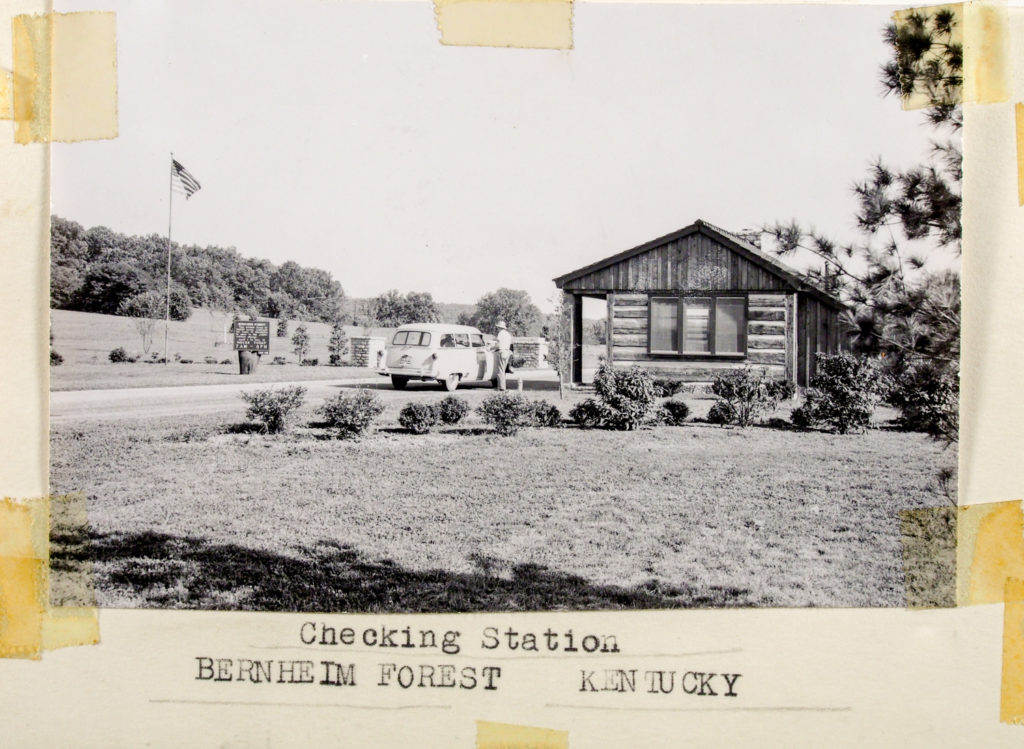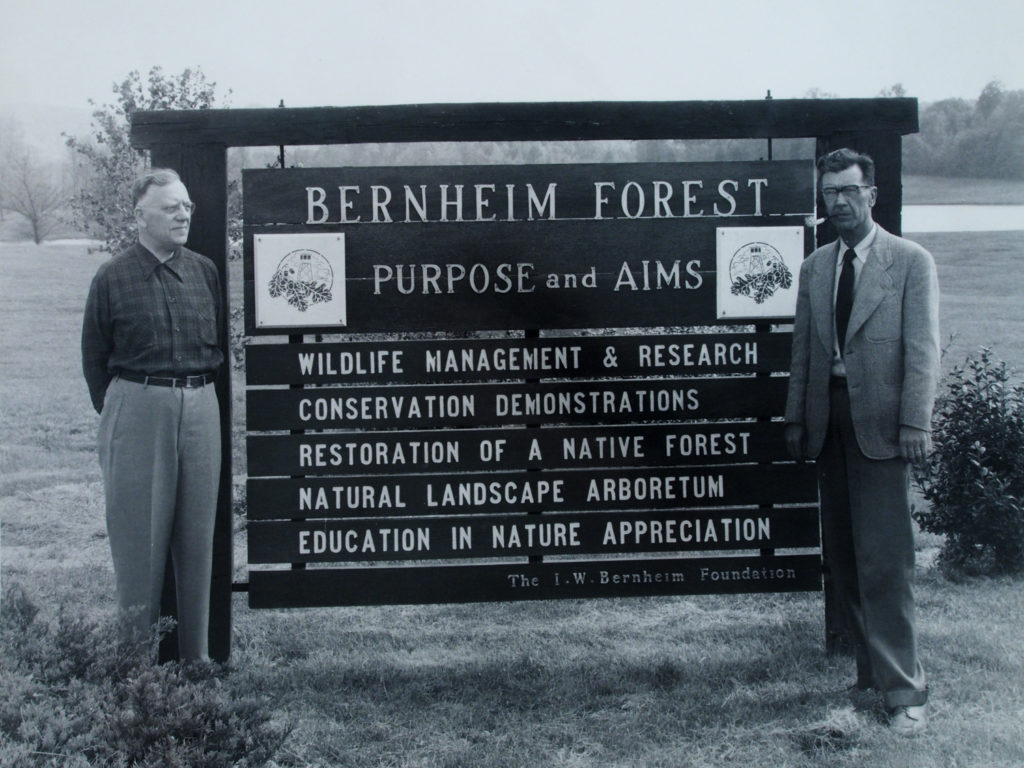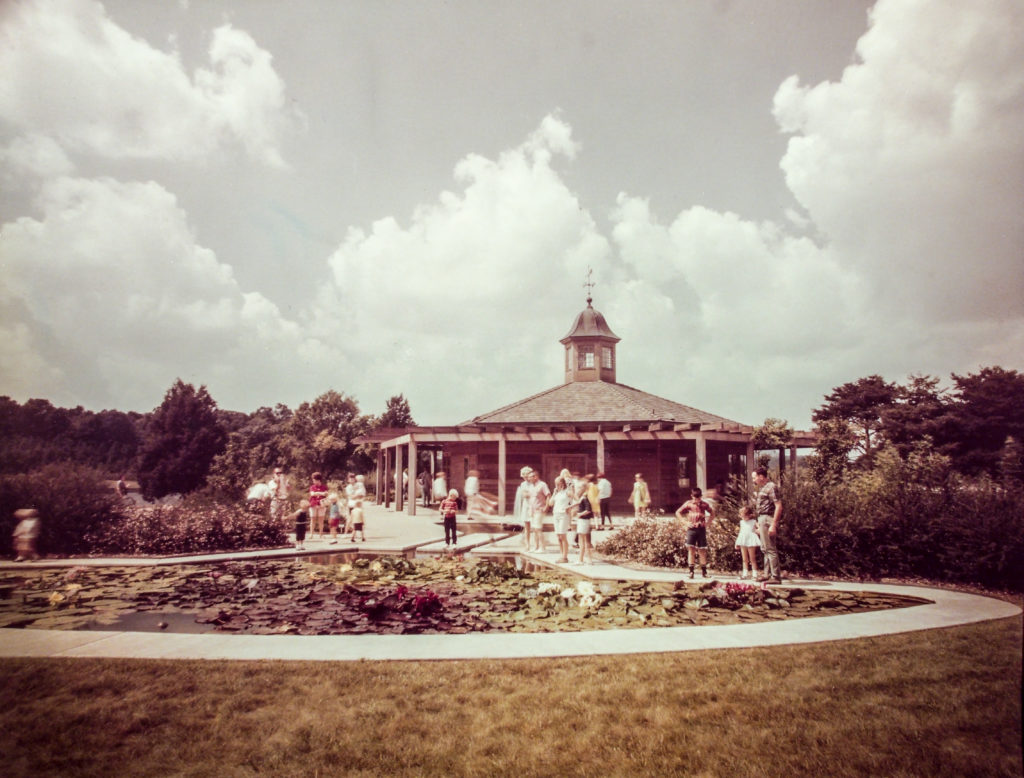By Bernheim
In Bernheim’s 90 year history there have been many people whose giant contributions have made this arboretum and research forest possible. Without doubt, Isaac Bernheim was foremost in that group but he was far from alone. Most of the names are not familiar to Bernheim visitors but their vision and efforts have been key in making this forest sanctuary available to us all. It is appropriate that we look back at some of those contributions. This is the sixth in a series of posts to highlight those efforts. (click here to read part 1; click here to read part 2; click here to read part 3, click here to read part 4, click here to read part 5)

In 1950 Bernheim Forest turned twenty-one and was ready to meet the world. A lot of work had been done in the 29 years since the Bernheim Foundation was created and the once abused land was well on its way to recovery. Lakes had been carved out in the arboretum, roads had been built and some significant planting had taken place as well. The trees in the natural areas were maturing and had begun to look more like the forest that they would become. What was not in place was a manager who knew how to run such an operation. The previous manager, James Browne, had passed away the previous year and no one working in the forest and no member of the foundation board had any experience at operating anything like what was envisioned for Bernheim Forest. Fortunately the right man for the time was located just in time. Frank Bunce was hired to be the Forest Manager on March 1, 1950 while he was living and working in the Huntington, West Virginia area. The forest opened to visitors just three months later.

Frank Bunce came to Bernheim with many years in the field. He had spent some of his early years doing landscaping work. Then, for seventeen years, he worked for the National Park Service and later the Army Corps of Engineers, where his duties included overseeing recreation and conservation on land owned by that agency. He had previously expressed interest in working at Bernheim Forest and was prepared to take on its challenges. Challenges were definitely plentiful. Despite the preparation that had taken place, there was much to be done. Facilities for visitors were lacking, no drinking water, only primitive toilets, picnic tables were scarce and the staff had no training on how to interact with visitors. There was also no clear idea of what would be most needed for the public. In 1950, the forest opened with almost no publicity; people discovered that the gate was open through word of mouth or by accident. The work force at Bernheim were hardworking men (there were no women at the beginning, but that would soon change) who were accustomed to the physical work of building roads and trails, planting trees in the arboretum and similar tasks but had no experience in being hosts to the public.

In that first year an estimated 20-25,000 visitors found their way to Bernheim. That number would soon be eclipsed. 1951 saw over 35,000 come through the gate and by the end of the decade the count climbed to 168,000 – this at a time when Bernheim was open for only 8 months each year. Many changes would take place under the leadership of Mr. Bunce. In 1952, a small nature museum was created by repurposing an old farm building and filling it with an assortment of exhibits fashioned at the forest. The arboretum started to be worthy of its name with ginkgo trees planted in 1952, beech trees in 1954, and nut trees added in 1955. Many more changes to the arboretum would follow the hiring of horticulturalist Buddy Hubbuch in 1960. Several trails were laid out in the and marked in the forest and quickly became a fundamental part of the visitor experience. During Mr Bunce’s 23+ years as Forest Manager, a great number of other big changes were made. A new Nature Museum (now the Education Building) and the Arboretum Center (now the Garden Pavilion) were built. Naturalists were hired and assisted visitors in increasing their familiarity with nature and their appreciation for it. In 1956, Isaac and Amanda Bernheim came home when their remains were transferred from Cave Hill Cemetery to their beautiful resting place overlooking the arboretum. Roads were improved and new ones were added. One road addition, Paul’s Point Loop, provided access to additional areas for hiking and exploring nature – plus it made possible the construction of the Canopy Tree Walk many years later. The popular Sun and Shade Trail and the Quiet Garden were added and remain visitor favorites to this day.

Frank Bunce retired in 1974, ending an era that saw many changes and great progress. More work remained and changes will continue to be made in the future, but Frank Bunce had a major role in making Bernheim’s introduction to the public a resounding success.
–Ken Johnson, Bernheim Volunteer Naturalist
 In 2019, Bernheim celebrates 90 years of connecting people with nature. At over 25 square miles, Bernheim is the largest privately held forest dedicated to conservation and education in the region. Our arboretum is home to plant collections of over 8,000 varieties, public art, and educational programming for thousands of students. Our pristine forest hosts hikers and outdoor adventures alongside research and conservation projects which will serve to protect the environment for future generations.
In 2019, Bernheim celebrates 90 years of connecting people with nature. At over 25 square miles, Bernheim is the largest privately held forest dedicated to conservation and education in the region. Our arboretum is home to plant collections of over 8,000 varieties, public art, and educational programming for thousands of students. Our pristine forest hosts hikers and outdoor adventures alongside research and conservation projects which will serve to protect the environment for future generations.
As a 100% member and donor supported organization, we could not fulfill this important mission without you. We hope you’ll continue to support our efforts throughout the next 90 years. Join or donate by clicking here.

